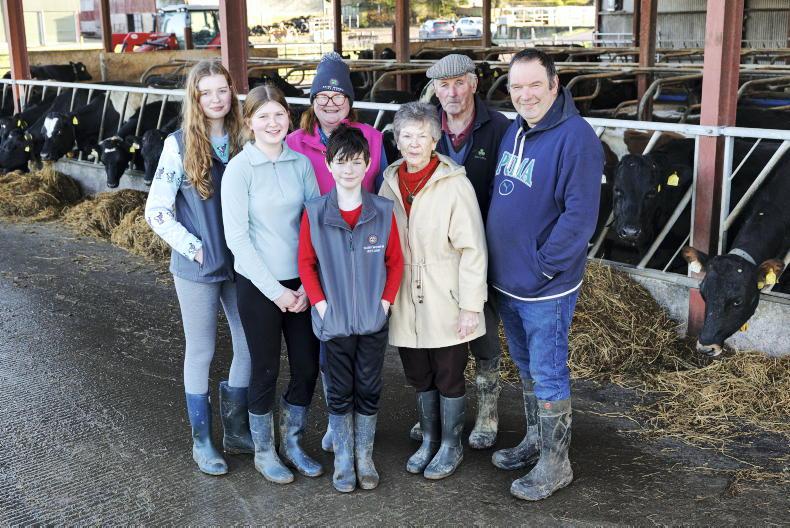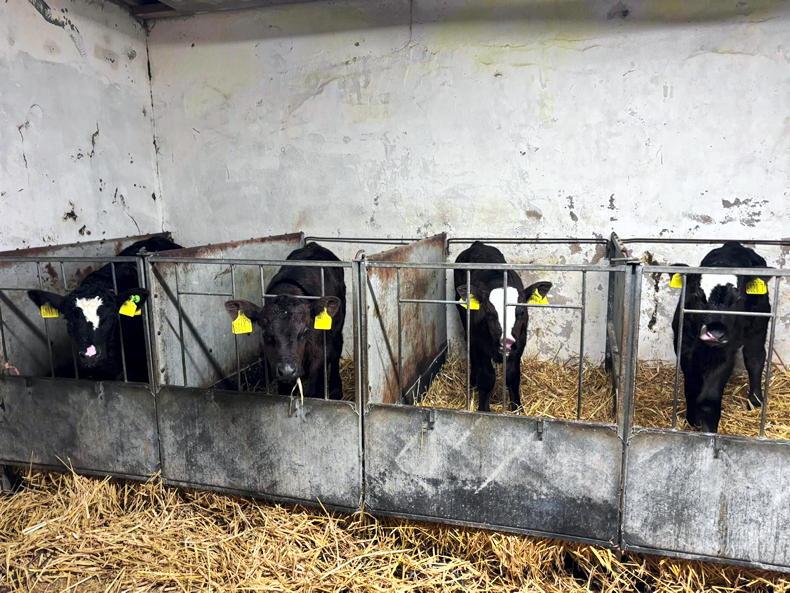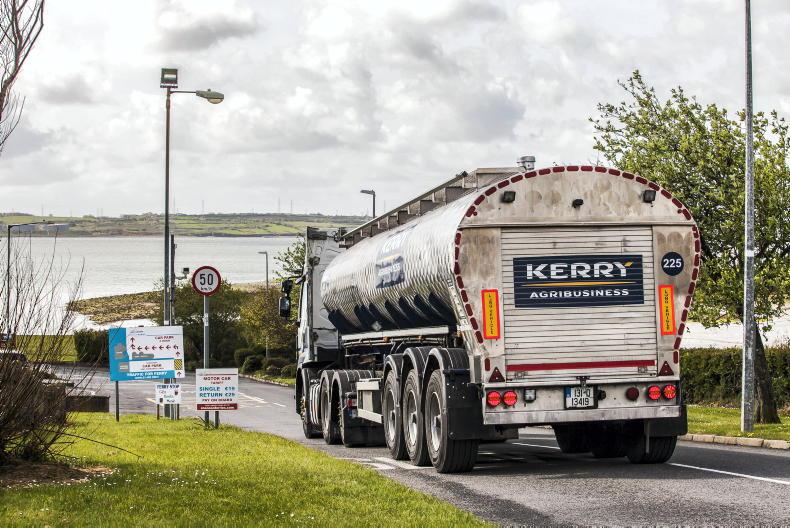What happens when there are two farmers but only one farm? This is a common enough issue whereby the older generation is too young to retire and the younger generation is chomping at the bit and looking for the chance to farm.
It’s not a problem when the farm can expand to meet the objectives of both, but where that is not possible there’s a bit of a quandary.
More often than not, the son or daughter returns home and farms alongside their parents until they reach retirement age.
It always strikes me as being a bit of a lost opportunity for the younger person to spread their wings, make their own mistakes and learn life skills away from the relative security of home.
Such a dilemma faced the Sheehan family from Carraig na bhFear – a dairy farming hotspot just north of Cork city.
John Sheehan is a good farmer doing a good job with 130 high performing dairy cows. A previous monitor farmer in the Teagasc/Dairygold joint programme, he has a good handle on cows, grass and how to run a profitable farm.
The apple didn’t fall too far from the tree when it came to his son, Paul. A keen farmer from a young age, he helped his father look after a neighbouring dairy farm during the summer holidays in fifth and sixth year of school.
“That experience taught us that we liked working with each other and we liked working away from each other,” Paul says with the benefit of hindsight.
After finishing school he went on to Clonakilty Agricultural College for two years before going on to start the professional diploma in dairy farm management course, being run by Teagasc and UCD. But he couldn’t finish it.
“I was looking at the Irish Farmers Journal one day and I came across a farm that was advertised for lease in Conna, so I rang the auctioneer about it. I came home and said it to my father about this farm for lease. He said: ‘“Oh yeah, which one?’’ It turns out he had already rang the auctioneer about it himself,” Paul says.
That was February 2019 and the farm was a 150ac drystock farm at Conna, 30 minutes away in east Cork. The 15-year lease was signed in September 2019.
“It was the first farm we walked, so we were lucky. If this didn’t come off, I would have completed the course and would probably have gone managing a farm for someone while also looking for a farm to lease. I definitely wasn’t going to go home farming with Dad on the home farm. That farm is surrounded by good dairy farmers, so the chances of expanding that are limited,” Paul says.
The 150 acres is one block of superb quality land. All capital to be invested in buildings and infrastructure was to be paid for by the Sheehans, but an allowance for this was worked into the annual lease payment, so in effect they are getting it back over the course of the lease.
The farm was being operated as a well-run dairy calf-to-beef farm prior to Paul and John taking it over. There were existing cubicle sheds for 80 cows and loose bedding sheds and there was a silage slab and outdoor slurry store.
Additional cubicles were installed in existing sheds to bring to 160 the total amount of cubicles on the farm today and a 20-unit parlour was installed in an existing shed next to the cubicle shed.
Out in the fields, all existing roadways had to be resurfaced and new roadways were constructed to give access to further away paddocks. The farmyard is fairly centrally located and almost all of the land can be accessed with relatively short walks.
A water and paddock system was already in place with just some upgrades here and there. Total capital expenditure, excluding cows, was around €1,500 per cow space on the farm.
Paul explains that the dry land in Conna is what makes the farm tick for them. All 290 cows calve on the home farm in Carraig na bhFear with 100 freshly calved cows and heifers moved to Conna in mid-February where they go to grass day and night.
As those cows are dropped off in Conna, the 40 or 50 late-calving cows which are wintered in Conna are brought back home to Carraig na bhFear for calving.
The final 60 cows are brought to Conna in March at the same time as the 100 maiden heifers wintered at Conna are brought to the outfarms near the home farm for grazing.
In springtime, Paul gets up at 5am and travels the 35km journey to Conna every morning.
Farm performance is excellent
Cows are milked and wires are set up and he’s back home by early morning to get stuck into the jobs at home, such as feeding calves, cleaning out pens, setting up wires for the home farm, etc. After dinner, he’s back into the jeep and off to Conna again before being back home for 4.30pm.
Farm performance is excellent. The home farm has grown 13.5tDM/ha on average over the last three years, while the Conna farm grows an average of 15.5t DM/ha. This will be back a bit in 2022 due to the long dry period in late summer. A total of 215kg N/ha was spread across the Conna farm this year.
Paul says his favourite thing about farming is managing grass. He completed the Irish Farmers Journal grassland management course in 2019 and does almost 50 walks per year across each of the farms.

Paul Sheehan. \ Donal O' Leary
Fertility performance has also been good with 7% across both herds empty this year after 11 weeks of breeding. Cow type is a mix of Holstein Friesian and Jersey crossbred.
The home farm was traditionally Holstein Friesian but some of the heifers that they purchased in when they took on Conna were Jersey crossbred.
Impressed with their performance, the breeding programme has been moving more and more towards crossbreeding with Jersey from sexed semen.
Despite more than doubling cow numbers and setting up a second unit, performance never faltered. In 2020, with 50% heifers across both farms the average milk yield was 522kg MS/cow from 840kg of meal.
In 2021, the average milk solids across both farms was 519kg MS/cow from 780kg of meal per cow, while in 2022 Paul expects the herd to deliver 545kg MS/cow from 950kg of meal per cow.
“My ideal cow would weigh around 520kg and be producing that in liveweight from around 750kg of meal,” Paul says.
Paul is on the Conna farm almost every day from February until the bulls go out in June. From then on, he milks five days a week and usually has the weekends off with local relief milkers covering the Saturdays and Sundays. Outside of farming, he’s a committed hurler, playing centre field on the Carraig na bhFear first team.
At 24 years of age, he’s already standing out from the crowd in terms of talking the talk and walking the walk. Rather than being under the shadow of John at the home farm, the Sheehan family made a bold decision to grow the business and Paul with it.
Irish Dairy Farmer magazine
This article is an abridged version of one of the articles in the Irish Dairy Farmer magazine – a glossy annual magazine produced by the Irish Farmers Journal dairy team. The magazine is available by subscription only at www.ifj.ie/dairyfarmer or by phoning 01-4199 505 or 01-4199 525.
What happens when there are two farmers but only one farm? This is a common enough issue whereby the older generation is too young to retire and the younger generation is chomping at the bit and looking for the chance to farm.
It’s not a problem when the farm can expand to meet the objectives of both, but where that is not possible there’s a bit of a quandary.
More often than not, the son or daughter returns home and farms alongside their parents until they reach retirement age.
It always strikes me as being a bit of a lost opportunity for the younger person to spread their wings, make their own mistakes and learn life skills away from the relative security of home.
Such a dilemma faced the Sheehan family from Carraig na bhFear – a dairy farming hotspot just north of Cork city.
John Sheehan is a good farmer doing a good job with 130 high performing dairy cows. A previous monitor farmer in the Teagasc/Dairygold joint programme, he has a good handle on cows, grass and how to run a profitable farm.
The apple didn’t fall too far from the tree when it came to his son, Paul. A keen farmer from a young age, he helped his father look after a neighbouring dairy farm during the summer holidays in fifth and sixth year of school.
“That experience taught us that we liked working with each other and we liked working away from each other,” Paul says with the benefit of hindsight.
After finishing school he went on to Clonakilty Agricultural College for two years before going on to start the professional diploma in dairy farm management course, being run by Teagasc and UCD. But he couldn’t finish it.
“I was looking at the Irish Farmers Journal one day and I came across a farm that was advertised for lease in Conna, so I rang the auctioneer about it. I came home and said it to my father about this farm for lease. He said: ‘“Oh yeah, which one?’’ It turns out he had already rang the auctioneer about it himself,” Paul says.
That was February 2019 and the farm was a 150ac drystock farm at Conna, 30 minutes away in east Cork. The 15-year lease was signed in September 2019.
“It was the first farm we walked, so we were lucky. If this didn’t come off, I would have completed the course and would probably have gone managing a farm for someone while also looking for a farm to lease. I definitely wasn’t going to go home farming with Dad on the home farm. That farm is surrounded by good dairy farmers, so the chances of expanding that are limited,” Paul says.
The 150 acres is one block of superb quality land. All capital to be invested in buildings and infrastructure was to be paid for by the Sheehans, but an allowance for this was worked into the annual lease payment, so in effect they are getting it back over the course of the lease.
The farm was being operated as a well-run dairy calf-to-beef farm prior to Paul and John taking it over. There were existing cubicle sheds for 80 cows and loose bedding sheds and there was a silage slab and outdoor slurry store.
Additional cubicles were installed in existing sheds to bring to 160 the total amount of cubicles on the farm today and a 20-unit parlour was installed in an existing shed next to the cubicle shed.
Out in the fields, all existing roadways had to be resurfaced and new roadways were constructed to give access to further away paddocks. The farmyard is fairly centrally located and almost all of the land can be accessed with relatively short walks.
A water and paddock system was already in place with just some upgrades here and there. Total capital expenditure, excluding cows, was around €1,500 per cow space on the farm.
Paul explains that the dry land in Conna is what makes the farm tick for them. All 290 cows calve on the home farm in Carraig na bhFear with 100 freshly calved cows and heifers moved to Conna in mid-February where they go to grass day and night.
As those cows are dropped off in Conna, the 40 or 50 late-calving cows which are wintered in Conna are brought back home to Carraig na bhFear for calving.
The final 60 cows are brought to Conna in March at the same time as the 100 maiden heifers wintered at Conna are brought to the outfarms near the home farm for grazing.
In springtime, Paul gets up at 5am and travels the 35km journey to Conna every morning.
Farm performance is excellent
Cows are milked and wires are set up and he’s back home by early morning to get stuck into the jobs at home, such as feeding calves, cleaning out pens, setting up wires for the home farm, etc. After dinner, he’s back into the jeep and off to Conna again before being back home for 4.30pm.
Farm performance is excellent. The home farm has grown 13.5tDM/ha on average over the last three years, while the Conna farm grows an average of 15.5t DM/ha. This will be back a bit in 2022 due to the long dry period in late summer. A total of 215kg N/ha was spread across the Conna farm this year.
Paul says his favourite thing about farming is managing grass. He completed the Irish Farmers Journal grassland management course in 2019 and does almost 50 walks per year across each of the farms.

Paul Sheehan. \ Donal O' Leary
Fertility performance has also been good with 7% across both herds empty this year after 11 weeks of breeding. Cow type is a mix of Holstein Friesian and Jersey crossbred.
The home farm was traditionally Holstein Friesian but some of the heifers that they purchased in when they took on Conna were Jersey crossbred.
Impressed with their performance, the breeding programme has been moving more and more towards crossbreeding with Jersey from sexed semen.
Despite more than doubling cow numbers and setting up a second unit, performance never faltered. In 2020, with 50% heifers across both farms the average milk yield was 522kg MS/cow from 840kg of meal.
In 2021, the average milk solids across both farms was 519kg MS/cow from 780kg of meal per cow, while in 2022 Paul expects the herd to deliver 545kg MS/cow from 950kg of meal per cow.
“My ideal cow would weigh around 520kg and be producing that in liveweight from around 750kg of meal,” Paul says.
Paul is on the Conna farm almost every day from February until the bulls go out in June. From then on, he milks five days a week and usually has the weekends off with local relief milkers covering the Saturdays and Sundays. Outside of farming, he’s a committed hurler, playing centre field on the Carraig na bhFear first team.
At 24 years of age, he’s already standing out from the crowd in terms of talking the talk and walking the walk. Rather than being under the shadow of John at the home farm, the Sheehan family made a bold decision to grow the business and Paul with it.
Irish Dairy Farmer magazine
This article is an abridged version of one of the articles in the Irish Dairy Farmer magazine – a glossy annual magazine produced by the Irish Farmers Journal dairy team. The magazine is available by subscription only at www.ifj.ie/dairyfarmer or by phoning 01-4199 505 or 01-4199 525.











SHARING OPTIONS